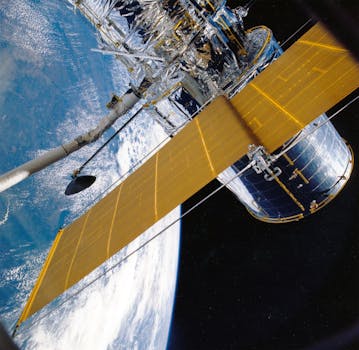The Future of Satellites: Revolutionizing Global Connectivity
The future of satellites is poised to revolutionize global connectivity, enabling faster and more reliable communication networks. With advancements in space technology, satellites are becoming increasingly important for various applications, including telecommunications, navigation, and Earth observation.

The Future of Satellites: Revolutionizing Global Connectivity
The future of satellites is poised to revolutionize global connectivity, enabling faster and more reliable communication networks. With advancements in space technology, satellites are becoming increasingly important for various applications, including telecommunications, navigation, and Earth observation. The focus keyword Future of satellites is becoming a crucial aspect of modern life, as we rely more heavily on satellite-based services for communication, navigation, and entertainment.
In recent years, the satellite industry has experienced significant growth, driven by the increasing demand for satellite-based services. The launch of new satellite constellations, such as OneWeb and Starlink, has enabled the provision of high-speed internet services to remote and underserved areas, bridging the digital divide and fostering economic growth. Moreover, the development of advanced satellite technologies, such as high-throughput satellites and satellite-based 5G networks, is expected to further enhance the capabilities of satellite-based services.
Advancements in Space Technology
Advances in space technology have been instrumental in shaping the future of satellites. The development of reusable launch vehicles, such as SpaceX’s Falcon 9 and Blue Origin’s New Shepard, has significantly reduced the cost of accessing space, making it more feasible to launch satellites into orbit. Additionally, the introduction of new materials and manufacturing techniques has enabled the production of smaller, lighter, and more efficient satellites, such as CubeSats and nanosatellites.
Furthermore, the use of advanced propulsion systems, such as ion engines and Hall effect thrusters, has improved the maneuverability and lifespan of satellites. These advancements have also enabled the development of more complex satellite systems, such as satellite swarms and constellations, which can provide more comprehensive and resilient coverage.
Applications of Satellites
Satellites have a wide range of applications, including telecommunications, navigation, Earth observation, and scientific research. Telecommunications satellites, such as geostationary satellites and low-Earth orbit (LEO) satellites, provide communication services, including voice, data, and video transmission. Navigation satellites, such as GPS and Galileo, enable precise location determination and timing.
Earth observation satellites, such as Landsat and Sentinel-2, monitor the environment, tracking changes in the climate, land use, and natural resources. Scientific research satellites, such as the Hubble Space Telescope and the James Webb Space Telescope, study the universe, advancing our understanding of the cosmos and the laws of physics.
Challenges and Opportunities
Despite the many advantages of satellites, there are also challenges and opportunities that need to be addressed. One of the major challenges is the increasing amount of space debris in Earth’s orbit, which poses a risk to operational satellites and the environment. Another challenge is the need for more efficient and sustainable launch systems, as well as the development of more advanced propulsion systems.
However, these challenges also present opportunities for innovation and growth. The development of new technologies, such as satellite servicing and debris removal, can help mitigate the risks associated with space debris. Additionally, the growing demand for satellite-based services is driving investment in the satellite industry, creating new opportunities for businesses and entrepreneurs.




